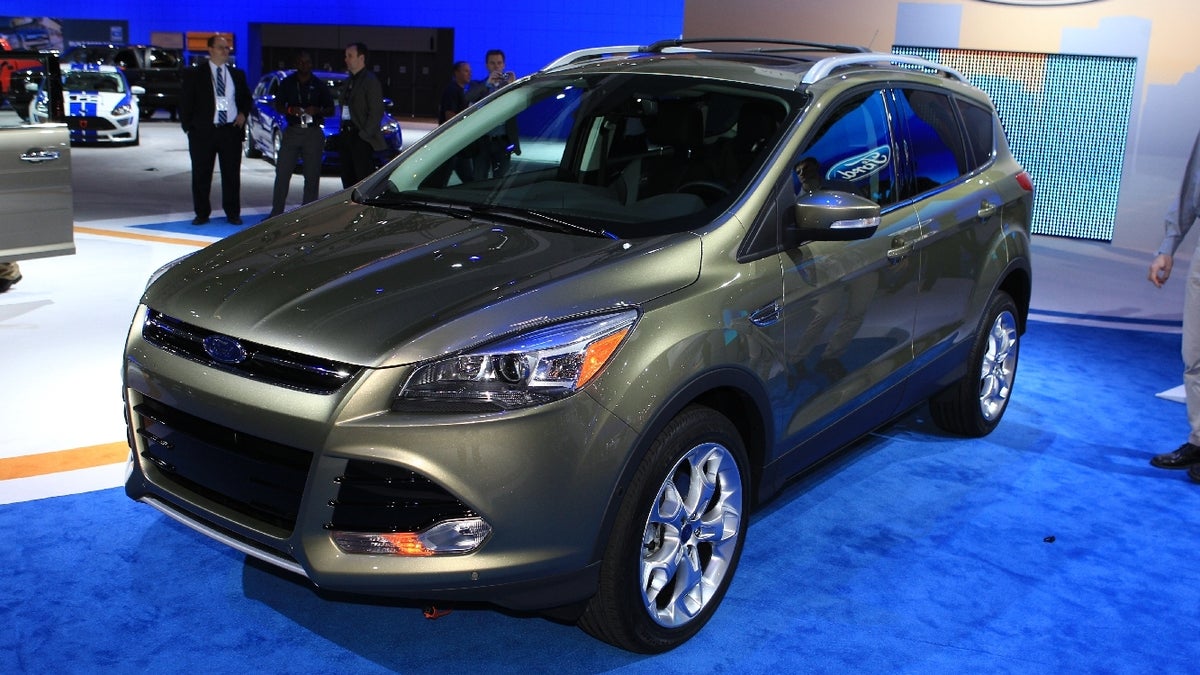Beyonce, Johnny Cash, and Mozart help Ford tune new Escape's stereo
Readying its 2013 Escape for production, Ford offered CNET details on the car's different stereo systems.

The Escape SUV gets a radical model update for 2013. The car goes from a boxy small truck to a modern crossover in one swoop, and it takes a wide variety of engineers to get all the details right.
CNET talked to Ford acoustic engineer Christine Templin, who is currently working on tuning the audio reproduction of the 2013 Ford Escape's stereo system.
The new model will be available with three different audio systems. Starting at the bottom is a six-speaker system with four door-mounted mid/woofers and two tweeters mounted on the car's A pillars. Next up from that is a nine-speaker system, adding two more tweeters high up on the rear doors along with a center channel in the dashboard.
The top-line system, with 10 speakers, comes from Sony. Templin and other Ford audio engineers leave that system's tuning to Sony engineers.
Work on the audio system started early on, as Ford engineers designed the car's cabin. The layout of the Escape's different audio systems is pretty standard stuff these days. Templin said her department was able to make some trade-offs so that even the very base system had tweeters.
With the hardware set, Templin and her colleagues use digital signal processing tools to come up with a default sound quality. Templin says she tries to create a soundstage in front of the car's passengers as opposed to a surround sound effect. This tuning attempts to replicate the feeling of being at a live show, where you are are facing the performers.
While tuning the audio system, Templin listens to a wide variety of music. She specifically mentioned Beyonce's Deja Vu track and the band 808 State for bass testing. With these tracks playing, she listens for bass quality, and reports any door panel rattling to another interior quality department.
She also uses Beyonce for testing clarity and detail. Female singers such as Jennifer Warnes and Rihanna also live in her arsenal of CDs for dialing in vocal quality.
Ford's audio engineers rely on CDs for tuning the audio systems, but during a process Templin referred to as subjective evaluation, they try listen to the car's other audio sources, from compressed music on iPods to FM radio. According to Templin, Ford is not currently using digital signal processing to enhance compressed audio, as some luxury makers have begun to do.
Following is a list of Templin's top 10 tracks for tuning the new Escape's audio systems:
- ZZ Top, "La Grange"--Listen for the clean snare drum clicks, left and right rhythm guitars, and strong bass guitar.
- Yello, "The Race"--Listen for a sensation of the car racing from right to left, and left to right.
- Lou Reed, "Walk on the Wild Side"--Listen for backup singers to move from far to near, testing image depth. Check for tonal balance and loud dynamics.
- Kenny Chesney, "Summertime"--Listen for clean vocals; instruments should be clearly defined.
- Eminem, "Remember Me"--Listen for loud dynamics, bass extension.
- Rihanna, "S.O.S."--Listen for tonal balance, clean bass, nothing shrill in the tweeters.
- Beyonce featuring Jay Z, "Deja Vu"--Listen for bass to be clean and even. Vocals should not break up or sound overly bright.
- Peter, Paul and Mary, "I Have a Song To Sing O"--This is an old recording with vocals panned left-center-right in order to test staging and imaging. Voices should retain a natural timbre.
- Johnny Cash, "Bird on a Wire"--This intimate recording (as if Cash were in his living room) tests tonal balance and spatial qualities. Vocals show a close-mic effect.
- Bruno Giuranna Mozart Piano Quartets 1 & 2, "Allegretto"--Listen for a natural piano tone. Strings should be forward.

